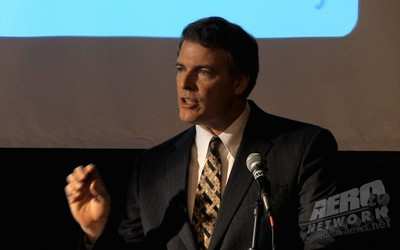GAMA Welcomes Committee's Leadership On Key GA Issues
Congressman Mike Rogers (R-AL) (pictured), Chairman of the Subcommittee on Transportation Security, has released a Majority Staff report entitled “Rebuilding TSA into a Smarter, Leaner Organization,” detailing the Subcommittee’s findings and recommendations to help the TSA evolve to become a more effective and more efficient agency.

During the 112th Congress, the Subcommittee launched a thorough examination of TSA’s operations, rules, and regulations and their impact on job-creating transportation industry stakeholders, as well as the traveling public. This examination included 22 hearings, 15 Member briefings, 7 site visits, and an in-depth review by the Subcommittee’s Majority Members and Staff.
The report compiles the findings from this examination and provides key recommendations to TSA for rebuilding a smarter, leaner organization, including to:
- Advance risk-based security by prioritizing the harmonization of aviation security standards worldwide, adopting a comprehensive plan to mitigate evolving threats, and expanding the use of canine explosives detection assets;
- Strengthen privacy protections by enlisting the private sector to modernize and, to the extent possible, automate the passenger screening process to reduce pat-downs, implementing privacy software on all AIT machines, and sponsoring an independent analysis of the potential health impacts of AIT machines;
- Limit spending by reducing the size of the TSA workforce, conducting cost-benefit analyses for all major programs and purchases, and communicating with industry to avoid setting technology requirements that are unattainable;
- Create jobs by contracting with the private sector to perform screening and establishing a five-year procurement plan to guide future investments in aviation security technology research and development; and
- Cut red tape by working with stakeholders to streamline existing security regulations, issuing final rules for long overdue security programs, and reforming the Prohibited Items List to better reflect evolving threats.
"Since TSA's creation after the devastating terrorist attacks of 9/11, the agency has gone down a troubling path of overspending, limiting private sector engagement, and failing to sufficiently protect passenger privacy," Congressman Rogers said. "Based on vigorous oversight by the Subcommittee on Transportation Security, this report shines a bright light on TSA and lays the groundwork for meaningful reform."
GAMA welcomed the report's release, saying it makes a number of suggestions to improve the operations of TSA and highlights three key general aviation security programs that warrant the dedicated attention of the Department of Homeland Security and TSA.

GAMA's President and CEO, Pete Bunce (pictured), said "The report is correct in its focus on some critical programs that need to be finished or fixed. The repair station security rule that has been languishing in the bureaucracy for years must be finalized. The alien flight student program must be made more effective and efficient in its administration. And, TSA must give proper attention and priority to establishing a risk-based security program for general aviation flight operations based on the consultative work done with industry almost four years ago."
The general aviation security programs highlighted by the report have been subject to significant work by industry over the past decade. For instance, industry has communicated numerous times with Department of Homeland Security (DHS) leadership about the importance of completing the repair station rulemaking. The inability of DHS to finalize a regulatory framework for repair station security impacts security and is impeding the competitiveness of manufacturers in key emerging markets.
Additionally, GAMA in 2011 petitioned DHS under Executive Order (EO) 13563 to rewrite the alien flight student program and establish a more proportional set of requirements for the vetting of foreign nationals seeking flight training. GAMA testified in June 2012 about the importance of TSA progressing with this rewrite and enhancing data sharing between federal agencies to mitigate any risks in flight training.
Finally, industry has worked with the TSA since the publication of the proposed Large Aircraft Security Program to establish a framework for general aviation security that effectively secures key flight operations without putting unneeded burdens on the industry. "We have consistently called for TSA to get the work done in these areas," Bunce said. "On this important day of remembrance, we salute Chairman Rogers and other subcommittee members for highlighting these areas, and we look forward to working with the Committee and TSA to address these important issues."
 Classic Aero-TV: The Switchblade Flying Car FLIES!
Classic Aero-TV: The Switchblade Flying Car FLIES! ANN FAQ: Q&A 101
ANN FAQ: Q&A 101 ANN's Daily Aero-Term (04.12.24): Discrete Code
ANN's Daily Aero-Term (04.12.24): Discrete Code ANN's Daily Aero-Term (04.13.24): Beyond Visual Line Of Sight (BVLOS)
ANN's Daily Aero-Term (04.13.24): Beyond Visual Line Of Sight (BVLOS) ANN's Daily Aero-Linx (04.13.24)
ANN's Daily Aero-Linx (04.13.24)




